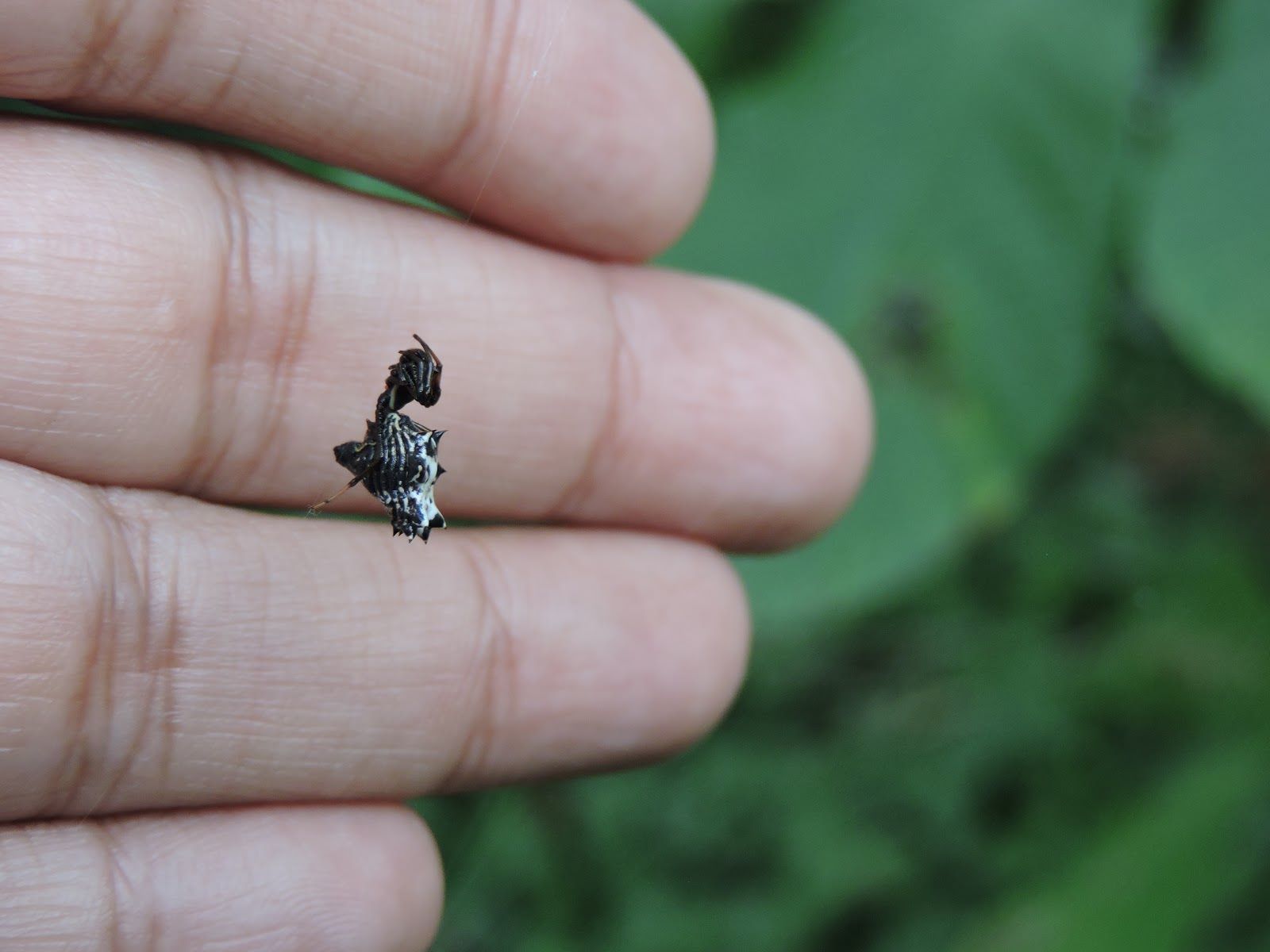
Spined Micrathena, also known as Micrathena gracilis, is a fascinating species belonging to the orb-weaving spider family. With its unique characteristics and intriguing behavior, the Spined Micrathena captivates both arachnologists and nature enthusiasts alike. In this article, we will uncover 17 astonishing facts about this remarkable creature, shedding light on its physical attributes, hunting techniques, and ecological significance. From its intricate web-building abilities to its striking appearance, the Spined Micrathena showcases the wonders of nature’s diversity and adaptation. So, prepare to be amazed as we delve into the world of the Spined Micrathena, uncovering remarkable facts that will leave you in awe.
Key Takeaways:
- The Spined Micrathena is a unique spider found in North America, known for its spiky appearance and intricate web-spinning abilities. It helps control insect populations, contributing to ecological balance.
- The female Spined Micrathena is larger than the male and guards its egg sac. Its silk has potential medical applications, and it plays a crucial role in natural pest control.
The Spined Micrathena is a unique spider species
The Spined Micrathena, scientifically known as Micrathena gracilis, is a fascinating species of spider that belongs to the orb-weaver family. This small arachnid is known for its distinct spiny appearance and intricate web-spinning abilities, making it a remarkable creature in the animal kingdom.
The Spined Micrathena is found in North America
The Spined Micrathena is native to North America and can be commonly found throughout the eastern parts of the United States and Canada. This species prefers habitats such as forests, woodlands, and gardens, where it can easily construct its webs and capture prey.
The Spined Micrathena has unique spiky projections
One of the most striking features of the Spined Micrathena is its spiky projections or spines found on its abdomen. These spines serve both as a defensive mechanism against predators and as a means to control the tension of its web when capturing prey.
The Spined Micrathena produces intricate orb webs
Using its silk, the Spined Micrathena constructs intricate orb webs that are characterized by their symmetrical design and radial pattern. These webs are strategically positioned to catch flying insects such as flies and mosquitoes, which serve as the main source of food for this spider.
The female Spined Micrathena is larger than the male
In the Spined Micrathena species, the females are significantly larger than the males. While the females can reach a body length of around 10-12 mm, the males are usually much smaller, measuring only about 5-6 mm in length.
The Spined Micrathena exhibits sexual dimorphism
Sexual dimorphism refers to the physical differences between males and females of the same species. In the case of the Spined Micrathena, the females have a rounder abdomen with spiky projections, while the males possess a slender body with leg-like appendages.
The Spined Micrathena produces venomous bites
Like many other spiders, the Spined Micrathena is venomous and capable of delivering bites to its prey. However, its venom is not considered harmful to humans and is generally only used to immobilize and digest its captured insects.
The Spined Micrathena’s lifespan is relatively short
The average lifespan of the Spined Micrathena is relatively short, lasting only about one year. The mating season for these spiders usually occurs during the late summer and early fall, after which the adults die, and the next generation takes over.
The Spined Micrathena undergoes molting
Similar to other arachnids, the Spined Micrathena undergoes molting throughout its life cycle. Molting is the process of shedding its old exoskeleton to accommodate its growth and development. After molting, the spider emerges with a new and larger exoskeleton.
The female Spined Micrathena guards its egg sac
After mating, the female Spined Micrathena constructs a silk egg sac. She carefully guards and protects the egg sac until the spiderlings hatch. Once hatched, the spiderlings disperse and start their individual journeys.
The Spined Micrathena has specific prey-capture strategies
To catch its prey, the Spined Micrathena uses a combination of strategies. It often stays hidden within its web, waiting for unsuspecting insects to become entangled. The spider then quickly immobilizes the prey with its venomous bite.
The Spined Micrathena plays a role in pest control
With its diet primarily consisting of small insects, the Spined Micrathena plays a beneficial role in natural pest control. By keeping populations of flying pests in check, this spider contributes to maintaining the balance of ecosystems.
The Spined Micrathena is a solitary spider
Although the Spined Micrathena may coexist with other spiders in the same vicinity, it is primarily a solitary species. Each spider constructs its web and hunts independently, avoiding direct contact or competition with others of its kind.
The Spined Micrathena serves as a food source for predators
Despite its defensive spines, the Spined Micrathena is preyed upon by various predators in its ecosystem. Birds, lizards, and some other spider species are known to feed on these orb-weaving spiders.
The Spined Micrathena undergoes courtship rituals
Before mating, the male Spined Micrathena performs a courtship ritual to attract the female. This ritual involves carefully approaching the female while avoiding her aggressive response. If successful, mating occurs, and the circle of life continues.
The Spined Micrathena’s silk has medical potential
Scientists have started studying the unique properties of the Spined Micrathena’s silk due to its potential medical applications. The silk’s strength and elasticity make it a promising candidate for developing biomedical materials such as sutures and tissue scaffolds.
The Spined Micrathena plays a role in ecological balance
As an important component of its ecosystem, the Spined Micrathena contributes to the overall ecological balance. Its presence helps control insect populations, preventing potential outbreaks and maintaining the health of the surrounding environment.
Conclusion
In conclusion, the Spined Micrathena is truly a fascinating creature with its unique features and behavior. From its intricate web designs to its vibrant colors and spiky abdomen, this spider captures the attention of anyone lucky enough to come across it in the wild. With its deadly venom and precise hunting techniques, the Spined Micrathena is a formidable predator within the animal kingdom.Through its ability to adapt to various environments and its role in maintaining the ecological balance, the Spined Micrathena showcases the incredible diversity and beauty of nature. Its presence serves as a reminder of the intricate web of life that exists all around us.We hope this article has provided you with valuable insights into the astonishing facts about Spined Micrathena. So, the next time you encounter this stunning arachnid, you will have a deeper appreciation for its remarkable qualities and contributions to the world of animals.
FAQs
1. What is the size of a Spined Micrathena?
The Spined Micrathena is a relatively small spider, with females measuring around 8-11 millimeters in length, while males are slightly smaller at 3-4 millimeters.
2. Are Spined Micrathenas venomous?
Yes, Spined Micrathenas possess venom. However, their venom is not considered harmful to humans. Their bites may cause slight discomfort but are generally harmless.
3. What do Spined Micrathenas eat?
Spined Micrathenas primarily feed on flying insects, such as mosquitoes, flies, and small moths. They utilize their intricate webs to capture their prey.
4. Where can Spined Micrathenas be found?
Spined Micrathenas can be found across North and South America, inhabiting forests, gardens, and grasslands. They prefer areas with dense vegetation where they can build their distinctive orb-shaped webs.
5. How long do Spined Micrathenas live?
The average lifespan of a Spined Micrathena is around one year. However, this can vary depending on factors such as environmental conditions and availability of food sources.
Was this page helpful?
Our commitment to delivering trustworthy and engaging content is at the heart of what we do. Each fact on our site is contributed by real users like you, bringing a wealth of diverse insights and information. To ensure the highest standards of accuracy and reliability, our dedicated editors meticulously review each submission. This process guarantees that the facts we share are not only fascinating but also credible. Trust in our commitment to quality and authenticity as you explore and learn with us.


